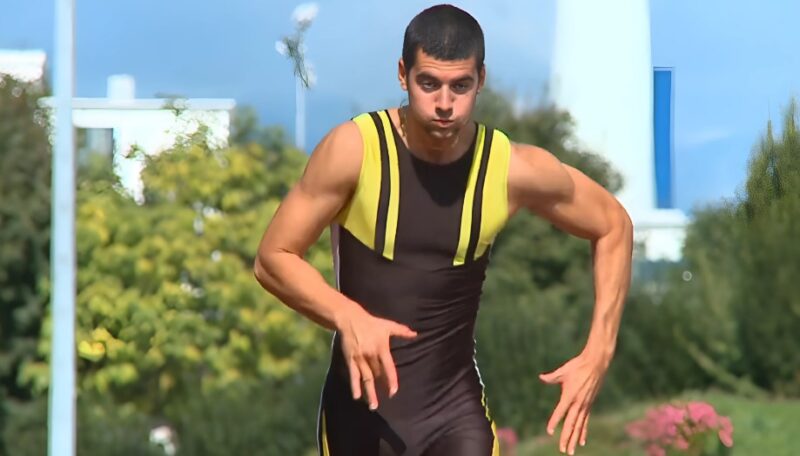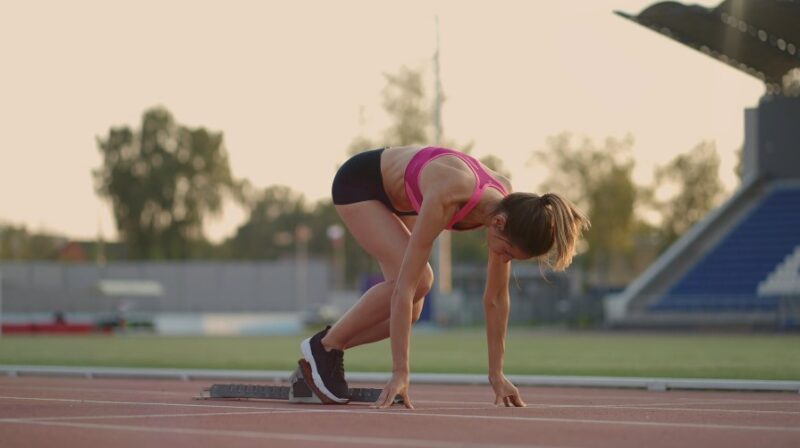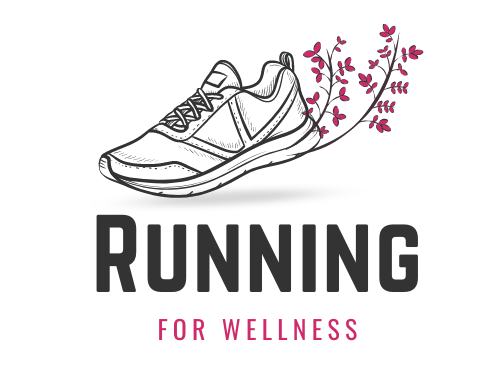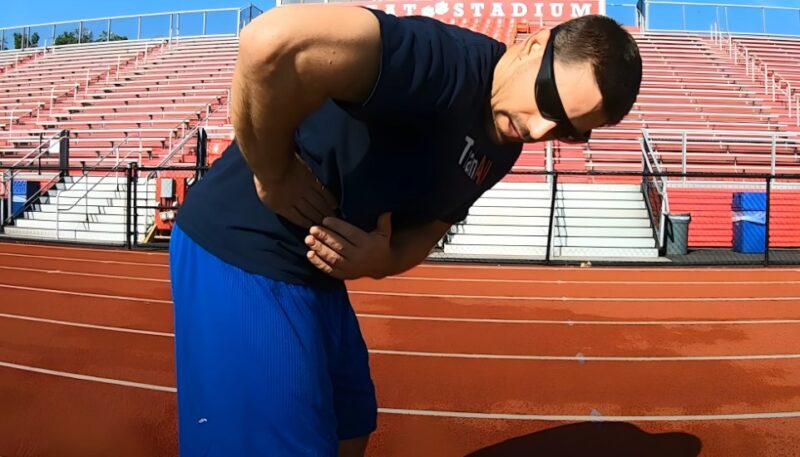Sprinting can trigger a sudden pain in the side, often called a side stitch. This sharp or cramping sensation can make it difficult to continue running. Many people experience it, but few understand what causes it and how to stop it.
A common cause is the diaphragm struggling to keep up with rapid breathing. Muscle fatigue, poor posture, or eating too soon before running can also contribute. Finding a well-known expert, like a physio in Brisbane City, or any other place where you live, can help assess breathing techniques and core strength to reduce the chances of pain. Small changes in form and preparation can make a big difference.
Learning why side stitches happen is the first step to preventing them. Breathing control, posture, and warm-ups all play a role. The next sections will break down the causes, how to stop a stitch mid-run, and the best ways to prevent it in future sprints.
Table of Contents
ToggleWhat Causes a Side Stitch When Sprinting?
A side stitch happens when a sharp pain strikes one side of the abdomen during a sprint. This can feel like cramping, stabbing, or pulling, which is why you need to learn how to care for your body. Many runners deal with it, but the exact cause can vary.
Breathing Struggles and the Diaphragm
Sprinting forces the body to take in more oxygen quickly. The diaphragm, a key muscle for breathing, can cramp when it does not get enough blood flow. This can lead to pain that feels like a stitch in the side.
Eating Too Soon Before Running
Food in the stomach pulls blood away from the diaphragm to help with digestion. This can make the diaphragm more likely to cramp, especially if the meal was too large or too close to the run.
Poor Posture and Weak Core Muscles
Slouching while running can put pressure on the abdomen and disrupt breathing. A weak core also makes it harder to stabilize the body, leading to strain on the diaphragm and more risk of side pain.
How Sprinting Intensity Plays a Role
Sudden bursts of speed can shock the body, making muscles work harder than they are ready for. If the body is not used to fast running, the diaphragm and core muscles may struggle to keep up, leading to pain.
How Breathing Affects Side Pain

Breathing plays a huge role in side stitches. Short runs forces the body to take in air quickly, but shallow or uneven breaths can lead to pain. The diaphragm works harder when breathing speeds up, and if it gets tired or strained, a side stitch can happen.
Shallow Breathing vs. Deep Breathing
Taking short, shallow breaths does not give the diaphragm enough oxygen. This can lead to cramping in the muscle, causing the sharp pain of a side stitch. Deep belly breathing, where the stomach expands on the inhale, helps keep the diaphragm relaxed and working properly.
The Timing of Breaths Matters
Runners often fall into a pattern of breathing in and out with their steps. If each exhale always happens on the same foot strike, one side of the body takes more impact, increasing the chance of a stitch.
Switching to an odd breathing pattern, like inhaling for two steps and exhaling for three, can spread the pressure evenly.
Holding Breath or Tensing Up
Sprinting can make some runners hold their breath or tense their stomach muscles too much. This puts extra strain on the diaphragm, leading to pain.
Staying relaxed and making sure to breathe out fully can help prevent side stitches from happening mid-run.
The Role of the Diaphragm in Sprinting Pain
The diaphragm controls breathing by helping the lungs expand and contract. Sprinting makes the diaphragm work harder, and when it becomes overworked, a sharp pain can strike the side.
How the Diaphragm Gets Overloaded
A sudden increase in speed forces the body to breathe faster. The diaphragm may not get enough blood flow, leading to cramps.
Without proper conditioning, it struggles to keep up with rapid breathing, causing pain in the side.
Why Weakness in the Diaphragm Matters
A weak diaphragm tires out faster, making it more likely to cramp. Strengthening it through deep breathing exercises and controlled exhaling during runs can reduce the risk of pain.
The body relies on the diaphragm for stability, and if it cannot handle the demand, side pain will follow.
The Connection Between Core Muscles and the Diaphragm
Core muscles help support the diaphragm. Weak abdominal muscles force the diaphragm to do more work, increasing the chance of cramping.
Strengthening the core makes it easier to maintain proper posture and breathing patterns, reducing stress on the diaphragm.
Eating Before Sprinting: What Helps and What Hurts

Food and drinks can play a big role in side pain during sprints. Eating the wrong things or eating too close to a run forces the body to split its energy between digestion and movement, increasing the chance of a stitch.
According to Tyler Wheeler and his article on WebMD, eating too close before training is actually one of the most common causes.
How Timing Affects Side Stitches
Eating right before a sprint makes the stomach work harder, pulling blood away from the diaphragm. Without enough blood flow, the diaphragm can cramp, causing sharp pain. Waiting at least two hours after eating before sprinting gives the body enough time to digest food properly.
Foods That Trigger Side Pain
High-fat and high-fiber foods take longer to digest, making them a bad choice before sprinting.
Greasy meals, beans, and raw vegetables sit in the stomach longer, increasing the chance of discomfort. Sugary drinks, including fruit juices and sports drinks, can also lead to cramping.
Better Choices for Pre-Run Fuel
Smaller, low-fiber meals with protein and simple carbohydrates work better before sprinting. A banana, toast with peanut butter, or a small bowl of oatmeal provide energy without overloading the stomach.
Drinking water instead of sugary drinks keeps hydration levels balanced without irritating the stomach.
How Posture and Core Strength Influence Stitches

A weak core or poor running form can force the diaphragm to work harder, leading to pain in the side.
Keeping the body stable and upright during sprints reduces strain and allows for better breathing.
How Slouching Affects the Diaphragm
Leaning too far forward or hunching over puts pressure on the diaphragm, restricting its movement.
Without enough space to expand fully, breathing becomes shallow, increasing the chance of a stitch. Running with an upright posture allows the diaphragm to function properly.
The Role of Core Muscles
Core muscles help keep the upper body stable during a sprint. A weak core forces other muscles, including the diaphragm, to take on extra work.
Strengthening the core improves posture and breathing, lowering the risk of side pain.
Key core exercises for better running posture include:
- Planks – Strengthen deep core muscles and improve stability.
- Russian Twists – Help control rotational movement and support the diaphragm.
- Leg Raises – Build lower abdominal strength for better posture. This exercise also improves endurance and helps with avoiding restless legs.
- Bicycle Crunches – Train obliques to maintain balance while sprinting.
Techniques to Stop a Side Stitch Mid-Sprint
Side pain can hit at any moment during a sprint. Knowing how to stop it quickly can help avoid having to slow down or stop completely.
Several techniques can ease the pain and keep the body moving.
Controlled Breathing to Relax the Diaphragm
Taking deeper breaths and focusing on full exhalation helps the diaphragm relax. Short, shallow breaths make the pain worse. A useful method is:
- Breathe in deeply through the nose for two steps.
- Exhale fully through pursed lips for three steps.
- Repeat until the pain lessens.
Pressing on the Painful Area
Applying firm pressure to the stitch while bending slightly forward can help release the cramp. Using the fingers to massage the area while exhaling deeply can reduce tension in the diaphragm.
Slowing Down or Changing Breathing Rhythm
If the stitch does not go away, easing into a slower jog or walk can help. Changing the breathing pattern, such as switching from a two-step inhale to a three-step exhale, spreads the strain across both sides of the body.
Best Ways to Prevent Side Stitches

Side stitches can be avoided by making small adjustments to breathing, posture, and training habits. Sprinting without pain comes down to preparation and conditioning.
- Train the diaphragm – Deep breathing exercises strengthen the diaphragm, making it less likely to cramp.
- Strengthen the core – A strong midsection stabilizes the body and reduces stress on the diaphragm.
- Time meals properly – Eating light and waiting at least two hours before sprinting helps avoid digestive strain.
- Use proper breathing techniques – Practicing an odd breathing pattern, like a 2:3 inhale-exhale rhythm, reduces the impact on one side of the body.
- Warm up before sprints – Starting with a light jog and deep breaths prepares the diaphragm for harder effort.
When to See a Doctor
A normal side stitch should go away within minutes. If pain continues for hours or appears even without exercise, it could signal a more serious problem.
Stitches that come with nausea, fever, or sharp stabbing sensations should be checked by a medical professional.
FAQs
Bottom Line
Side stitches can turn a sprint into a painful struggle, but they are not random. Breathing patterns, diaphragm strength, eating habits, posture, and core stability all play a role. Ignoring these factors leads to recurring side pain, while making small adjustments can prevent stitches altogether.
Deep breathing, proper warm-ups, and smart meal timing help reduce the risk. Strengthening the diaphragm and core muscles also improves running efficiency. If a stitch happens mid-run, slowing down, adjusting breathing, and applying pressure to the area can stop the pain quickly.
Related Posts:
- 25 Simple Running Motivation Tips To Get You Moving
- How Can You Start a Career as a Running Coach?
- Lower Back Pain While Running? Here's What You Need to Know
- Top 400 Hilarious Gym Quotes to Keep You Motivated
- Running Coach Salary - How Much Do They Really Make?
- Should You Run on an Empty Stomach? Pros and Cons Explained







